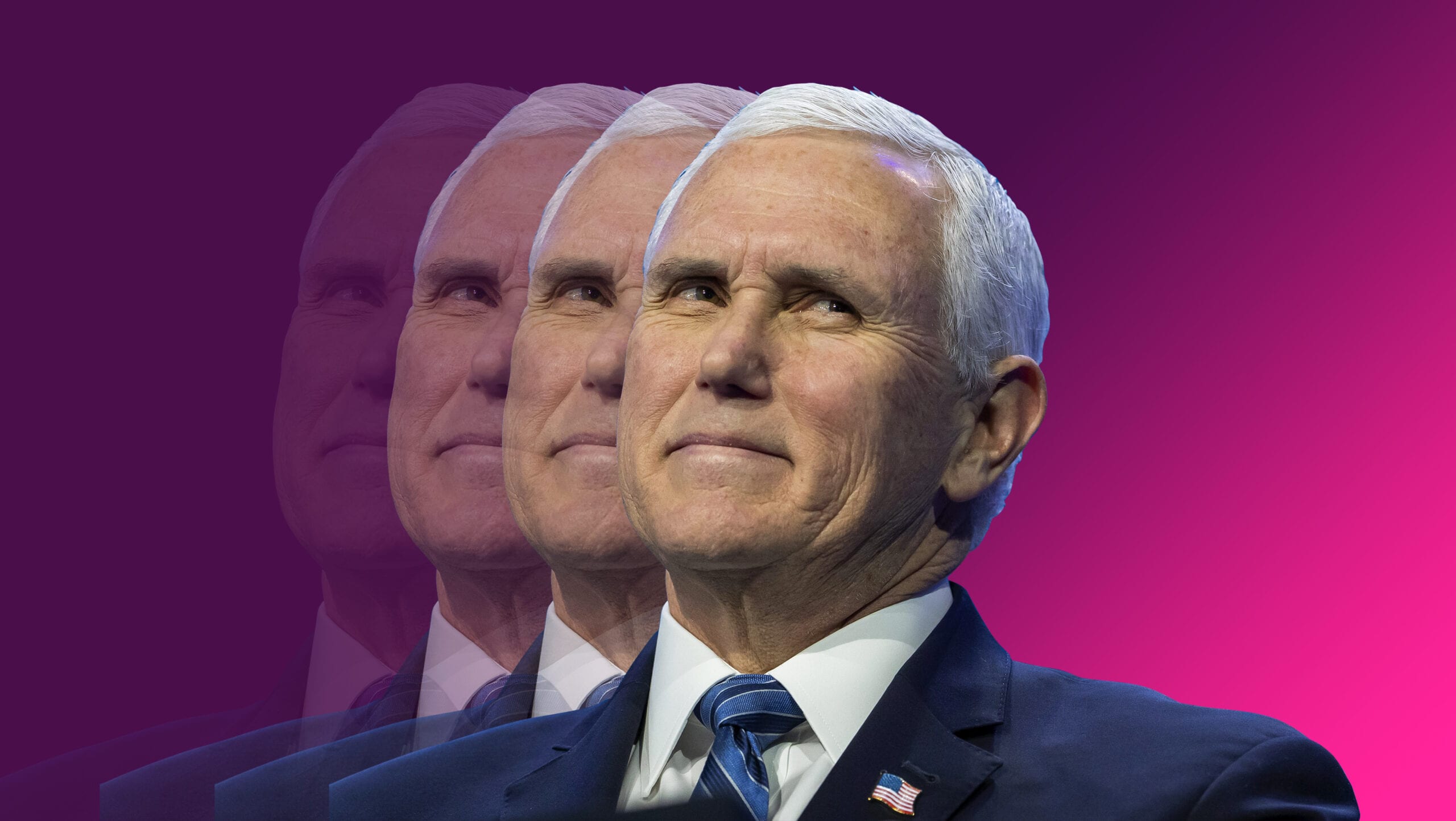If you’re one of the millions worried about the spread of COVID-19, colloquially known as coronavirus, U.S. President Donald Trump has an answer to your fears: Mike Pence.
Trump announced this week that his vice president would lead the U.S. government’s response to the global outbreak of coronavirus, which has infected more than 85,000 people worldwide and killed nearly 2,900. Cases of the novel virus have been recorded in almost 60 countries, and the U.S. has reported nine deaths related to the virus thus far.
Trump—who claimed during a weekend rally that the disease’s outbreak is being politicized by Democrats—believes Pence is the best person to take on the job of heading the coronavirus task force. In a White House press conference, he said that his second in command has a “certain talent” for responding to public health crises. Trump continued to claim Pence did “a phenomenal job on healthcare” as governor of Indiana, a position he held from 2013 to 2017.
Pence agreed that his record in Indiana is the main reason why President Trump asked him to take on the position. “I think by putting me over the administration’s response to the coronavirus,” he said in a recent interview with right-wing commentator Rush Limbaugh, “the president wanted to signal the priority that he’s placed on this.”
But as researchers around the world scramble to find an effective treatment for coronavirus, those familiar with Pence’s track record on health policy claim his selection is potentially disastrous. The vice president has been widely criticized for his role in an HIV outbreak in rural Indiana five years ago, which led to more than 200 people testing positive for the virus. Critics say the crisis would have been “entirely preventable” had Pence listened to the medical community and acted sooner.
“I wouldn’t put him in charge of anything because I don’t really trust him,” Jes Cochran, executive director of the Indianapolis-based harm reduction organization Never Alone Project, tells Xtra. “It’s important that [the federal government] believe doctors about what they’re seeing.”
The crisis began in November 2014, when medical experts reported an uptick of recorded cases of HIV in Scott County, a sparsely populated area in the southeastern part of the state about 90 minutes from Indianapolis. Most of those affected were intravenous drug users of the prescription opioid Opana, the vast majority of whom were poor and white. Many cases included drug users who were sharing needles among family members, leading to multiple generations using the same equipment.
Although Scott County didn’t fit the typical profile of communities affected by HIV—which are disproportionately non-white, LGBTQ and concentrated in urban areas—it represented a perfect storm of factors that would allow for the virus’ rapid spread in the months to come. It’s among the poorest counties in the state, with a per capita income of slightly over $22,000. Many residents couldn’t pay their utility bills.
“We’re talking about folks that are going to be living for 40 to 50 years with something that completely could have been prevented had Pence been on it”
Just as critically, the last remaining Planned Parenthood affiliate in Scott County had also closed the prior year due to state-wide budget cuts. It was the last place in the area where residents could go to get tested for HIV.
Even before Pence was alerted to the spread of HIV in Scott County over the coming months—with recorded cases topping 20 a week at the outbreak’s peak—he played a tangential role in the crisis. As Indiana’s elected representative to Congress, he backed an effort to defund Planned Parenthood in 2011. Although that push eventually failed, the state’s annual funding for the reproductive and sexual health organization decreased by $1.4 million between 2005 and 2014. Pence served as governor of Indiana from 2013 to 2017 before he was tapped to join the Trump administration.
Pence was alerted to the crisis in Scott County in January 2015, after more than 120 new cases of HIV had been identified. But he wouldn’t officially declare a public health emergency for another two months. At issue was Pence’s personal opposition to needle exchange programs that would allow residents of Scott County to inject opioids with clean syringes.
“I don’t believe effective anti-drug policy involves handing out drug paraphernalia,” Pence said at the time, adding that he would veto any legislation that allowed opioid users to inject safely under the care of medical professionals.
Alan Witchey, president and CEO of the Indiana-based HIV/AIDS non-profit Damien Center, says that Pence’s fears regarding needle-exchange programs were unfounded. “People think exchange programs lead to higher use of drugs, and we know that’s not true,” Witchey says, adding that these resources are proven to lead to safer drug use overall. “When we provide the needles to people, they’re far less likely to share needles with other people.”
Cochran agrees, saying the science on needle-exchange programs has been “undisputed since the 1990s.”
“A 2018 report by Yale University found that a timelier response from Pence could have reduced rates of new HIV diagnoses by 74 percent”
Despite the overwhelming medical consensus on the subject, Pence waited until March 2015 to issue an executive order allowing for a temporary needle-exchange program in Scott County—which was signed after the New York Times famously quoted Pence as saying he would “pray on it.” That order was followed by a separate bill signed into law in May 2015 which made it easier for counties across the state to establish their own programs to further harm reduction in drug use.
Studies conducted in the years since have claimed that the inaction on the issue was costly. A 2018 report by Yale University found that a timelier response could have reduced rates of new HIV diagnoses by 74 percent.
Although 90,000 clean syringes were distributed to Scott County between April and October 2015, dramatically decreasing the spread of HIV, the impacts of Pence’s foot-dragging are still felt to this day. Reports estimate the outbreak will cost the state of Indiana $58 million in long-term care for the hundreds of individuals who continue to live with the virus. The lifetime costs in medication and treatment for HIV-positive individuals is between $230,000 and $350,000, and many Scott County residents are either underinsured or uninsured.
“We’re talking about folks that are going to be living for 40 to 50 years with something that completely could have been prevented had Pence been on it,” Cochran said. “[HIV prevention and treatment] is expensive to manage, but it can be managed and can be managed very well.”
While Jerome Adams, who served as Pence’s health commissioner before joining the Trump administration as U.S. Surgeon General, has defended his boss by saying he made the hard choice when necessary, there are still major gaps in access to care in Indiana. Its needle-exchange program is scheduled to sunset in 2021, meaning the resources set up to ensure drug users are safely injecting in Scott County will soon be illegal. State lawmakers are debating whether to continue the program.
Many are hesitant to lay the blame for the continued crises affecting communities in Indiana entirely at Pence’s feet. Witchey stressed that Indiana is a “very conservative state” where needle-exchange programs have long proven to be a “controversial issue.” Dr. Carrie Lawrence, associate director for the Rural Center for AIDS/STD Prevention at the Indiana University School of Public Health, adds that the state’s fiscal policies “did not allow local counties to build a stronger infrastructure for public health at a local level.” She notes that the state is 49th in the country for public health investment.
“We’re still limited in our public health infrastructure as a state,” Lawrence says. She adds that Pence, like many conservative lawmakers in Indiana, view public policy as “more of a moral dilemma versus taking on the recommendations of the experts to implement an evidence-based prevention strategy.”
But Lawrence believes there’s a teachable moment here for Pence as he oversees the federal government’s response to a potentially unprecedented global health emergency (the World Health Organization has raised its impact alert for coronavirus from “high” to “very high”). She says the lesson from Scott County is that the best way to respond to a public health crisis “is based on the evidence and science,” rather than “what we might not feel comfortable with individually.”
“My biggest concern is that he’ll choose his own ideology and belief over sound science.”


 Why you can trust Xtra
Why you can trust Xtra


